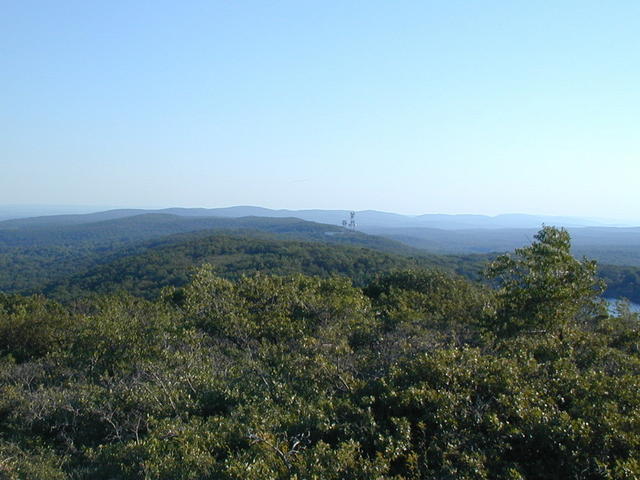Home » Regions » North America » Eastern Temperate Forests » Ozark, Oauchita-Appalachian Forests » Ridge and Valley » Northern Glaciated Ridges
Northern Glaciated Ridges
Last updated: October 5th, 2020
↑About the Northern Glaciated Ridges
The Northern Glaciated Ridges are the glaciated counterpart to the Northern Sandstone Ridges; they cover only a small region, mostly in New Jersey and New York State, with a small portion in eastern Pennsylvania. Only a tiny portion of these ridges were glaciated; the unglaciated ridges cover a much larger total area.This region consists of high, steep ridges, the ridgetops blunted somewhat by glacial erosion. The ridges consist of sandstone, conglomerate, and quartzite, with shale and other more easily-erodible rocks underlying the slopes. Terminal moraines and eskers (sand or gravel ridges) and numerous glacial lakes further distinguish this region from areas to the southwest. Glacial drift is discontinuous, leading to significant variation in soil type. There are numerous rocky outcroppings, and soil depth is highly variable, being thin or absent on many sites. Elevations here tend to be higher than surrounding regions; this area contains New Jersey's highest point, at 1,803 ft (550m). Soils are mostly shallow, sandy, and low in nutrients. Some sites have well-drained, deeper, but acidic soils.
Forest cover is highly distinct from that of surrounding regions. Sites with thin, dry, silica-rich, nutrient poor soils are dominated by pitch pine and scarlet oak. Pitch pine dominates ridgetops exposed both to winter snow and ice, and summer wildfires. More protected sites have pitch pine - scrub oak forests, including chestnut oak, scarlet oak, white oak, and red maple. Cove forests, with more water-saturated soils, have a radically different community, dominated by eastern hemlock, tulip tree, white oak, and sweet birch. There are also upland bogs that accumulate extensive peat deposits.
This area is sparsely populated and sparsely utilized by humans. It mostly consists of intact forest cover. There is a small amount of residential development, numerous state parks, and almost no agriculture.
This region is bordered to the northwest by the Northern Glaciated Limestone Ridges, Valleys, and Terraces, and to the southeast by the Northern Glaciated Shale and Slate Valleys at the ends and the Northern Glaciated Limestone Valleys in the middle of this region. At the southwest, at the limit of glaciation this region borders the Northern Sandstone Ridges.
 This view from High Point State Park, the highest point in New Jersey, shows a landscape typical of this region. The long ridges have been scoured by glaciers, and a glacial lake is visible in the right of the photo. Photo © Bogdan Migulski, CC BY 2.0.
This view from High Point State Park, the highest point in New Jersey, shows a landscape typical of this region. The long ridges have been scoured by glaciers, and a glacial lake is visible in the right of the photo. Photo © Bogdan Migulski, CC BY 2.0.Plant Lists & In-Region Search
We do not yet have data to generate plant lists for a region as fine-tuned as this one. However you can move up to the broader Ridge and Valley and generate lists for that region: native plants or all plants. Or search that region's plants here:
↑References
1. Woods, A.J., Omernik, J.M., Moran, B.C. "Level III and IV Ecoregions of New Jersey", (2007) Web.
2. Bryce, S.A., Griffith, G.E., Omernik, J.M., Edinger, G., Indrick, S., Vargas, O., and Carlson, D. "Ecoregions of New York (Poster)", U.S. Geological Survey (2010) Web.
3. Woods, A.J, Omernik, J.M., Brown, D.D. "Level III and IV Ecoregions of Delaware, Maryland, Pennsylvania, Virginia, and West Virginia", U.S. Environmental Protection Agency: National Health and Environmental Effects Research Laboratory, Corvallis, OR (1999) Web.


